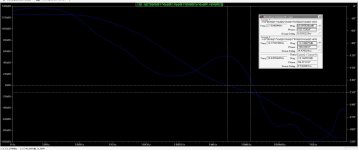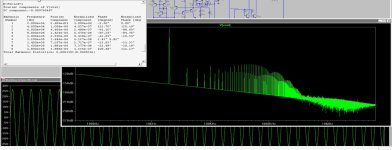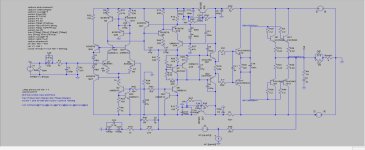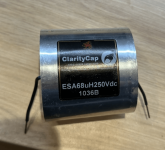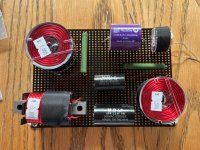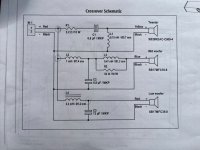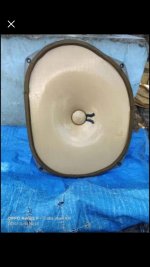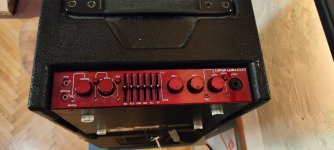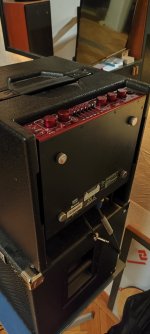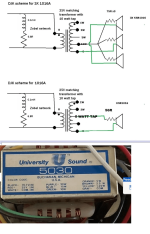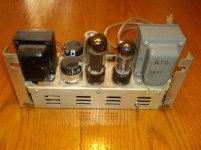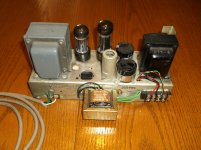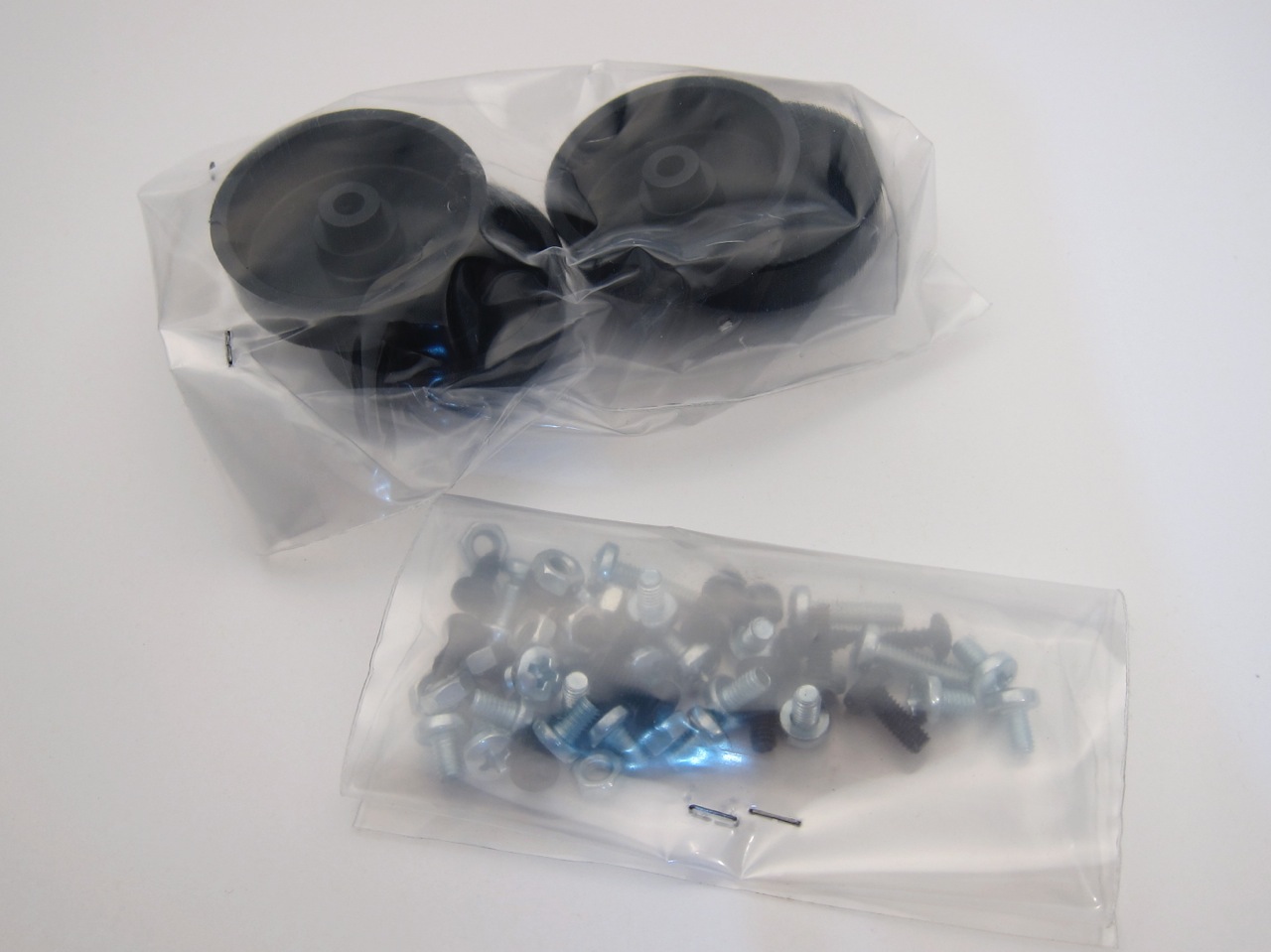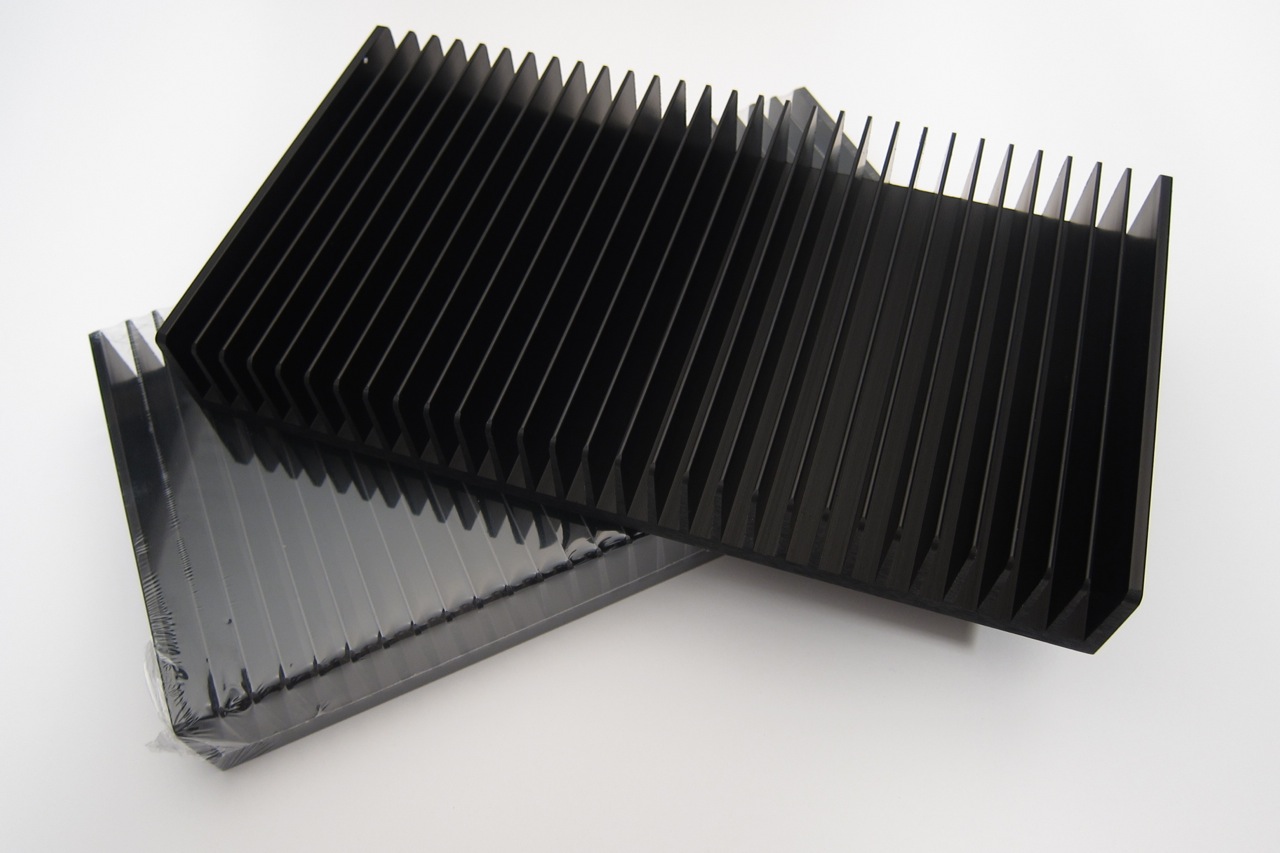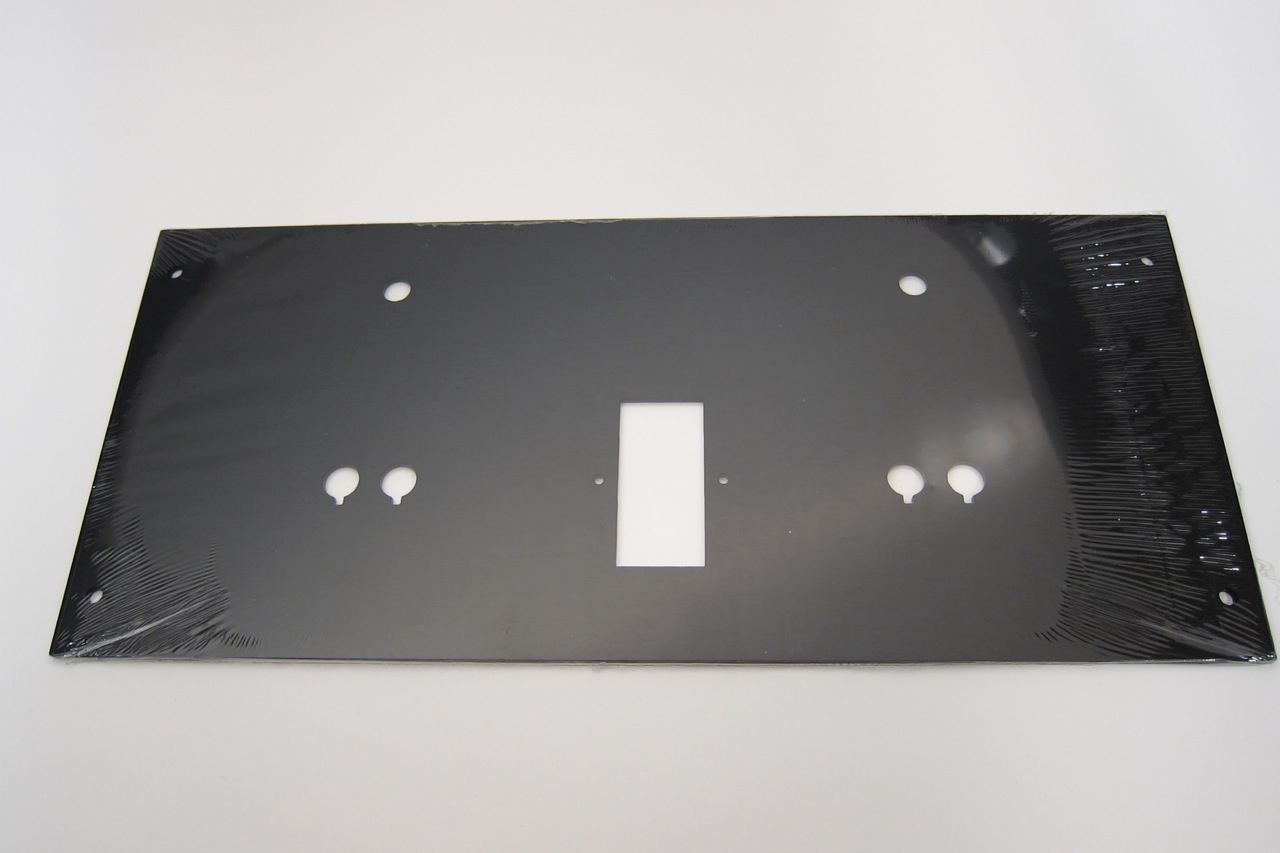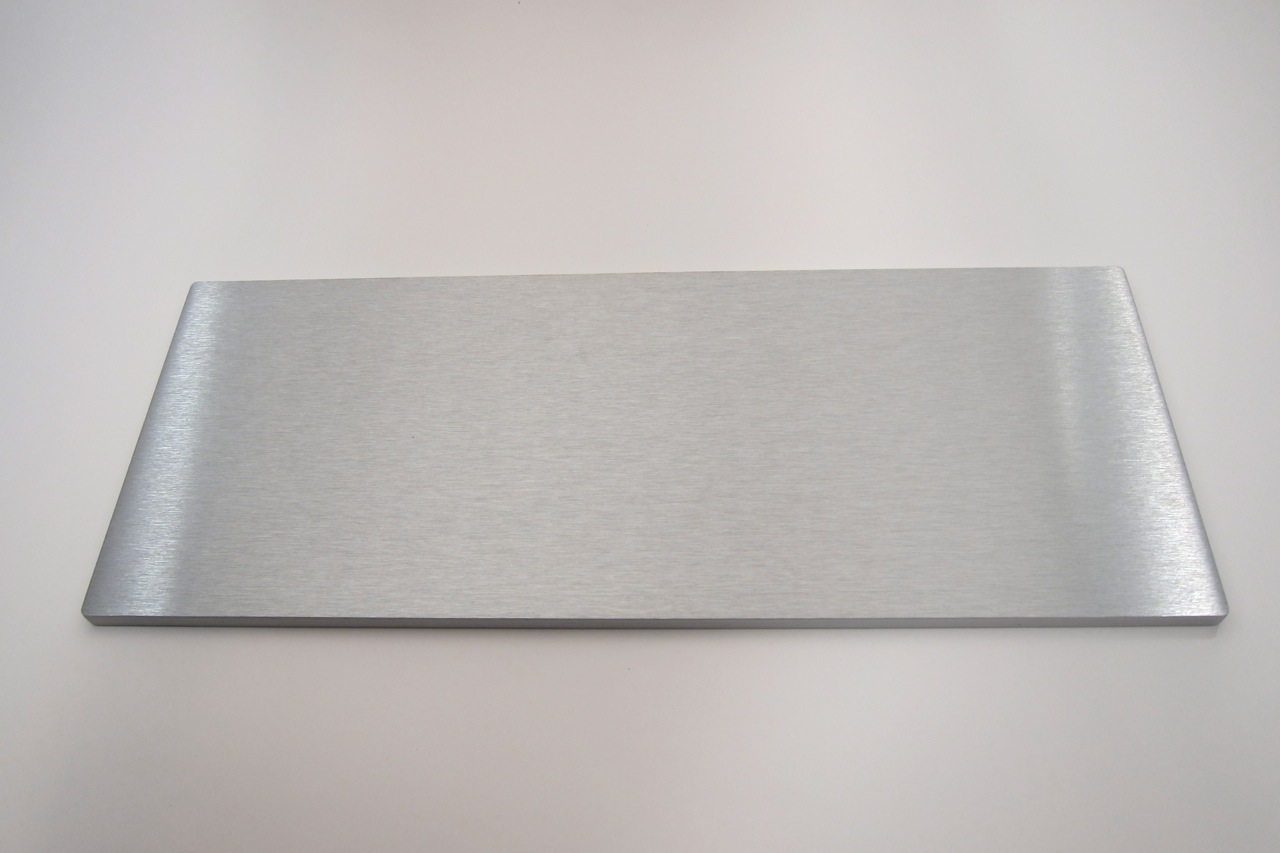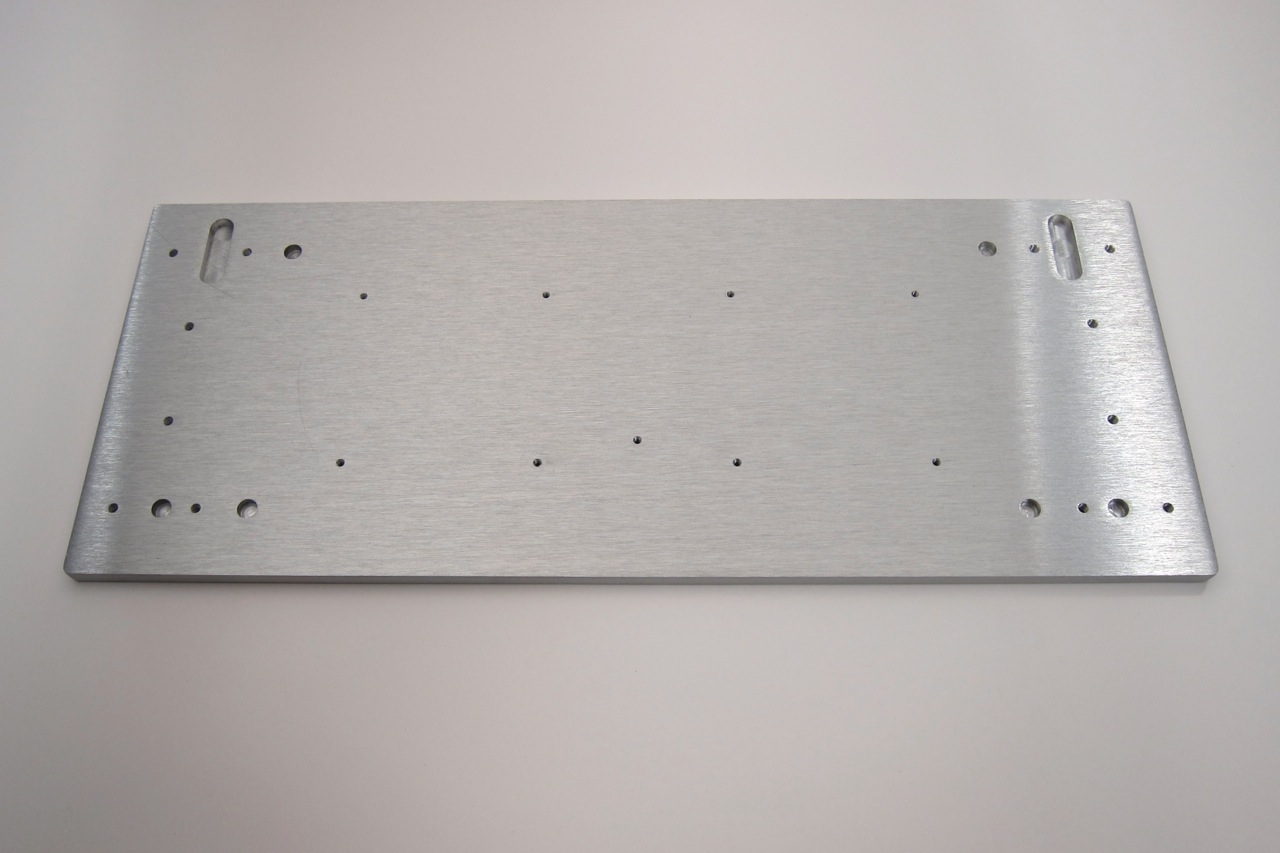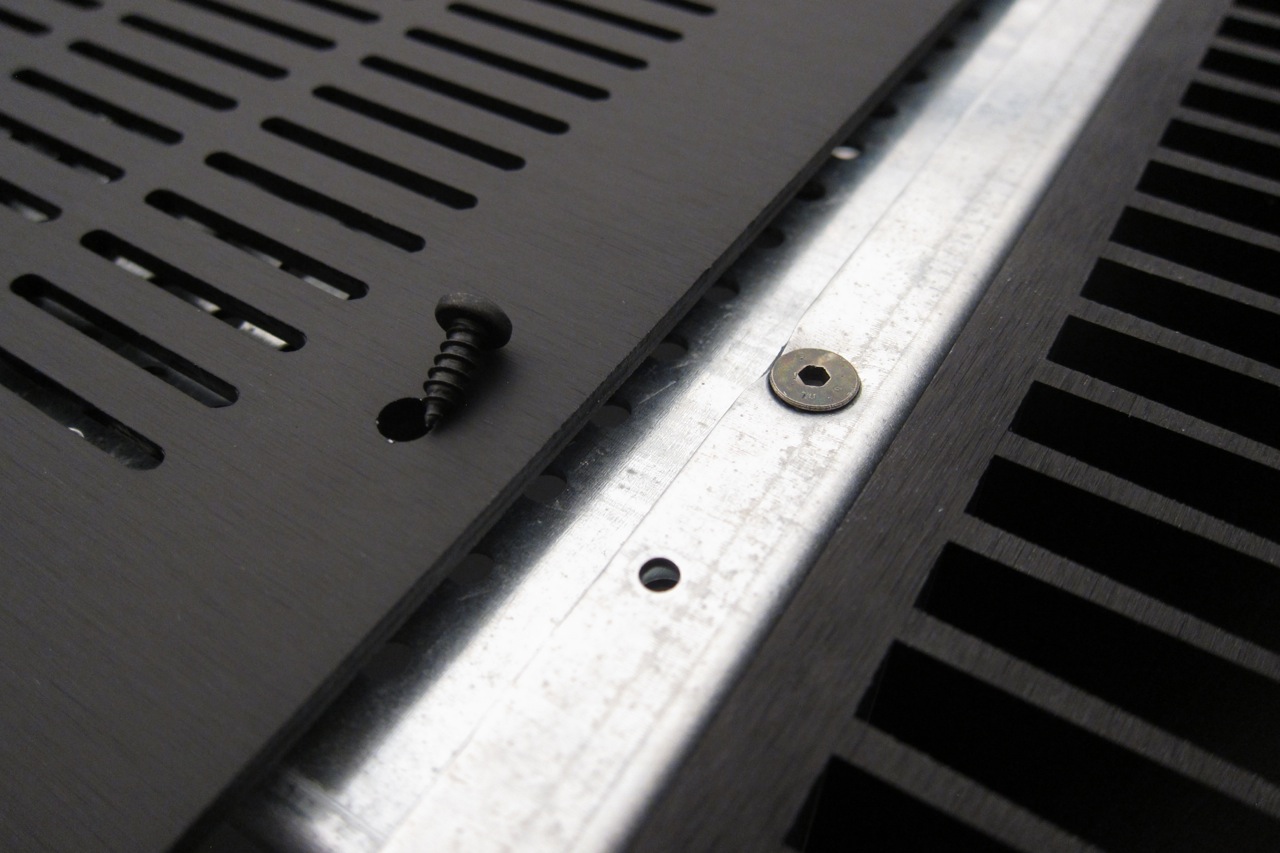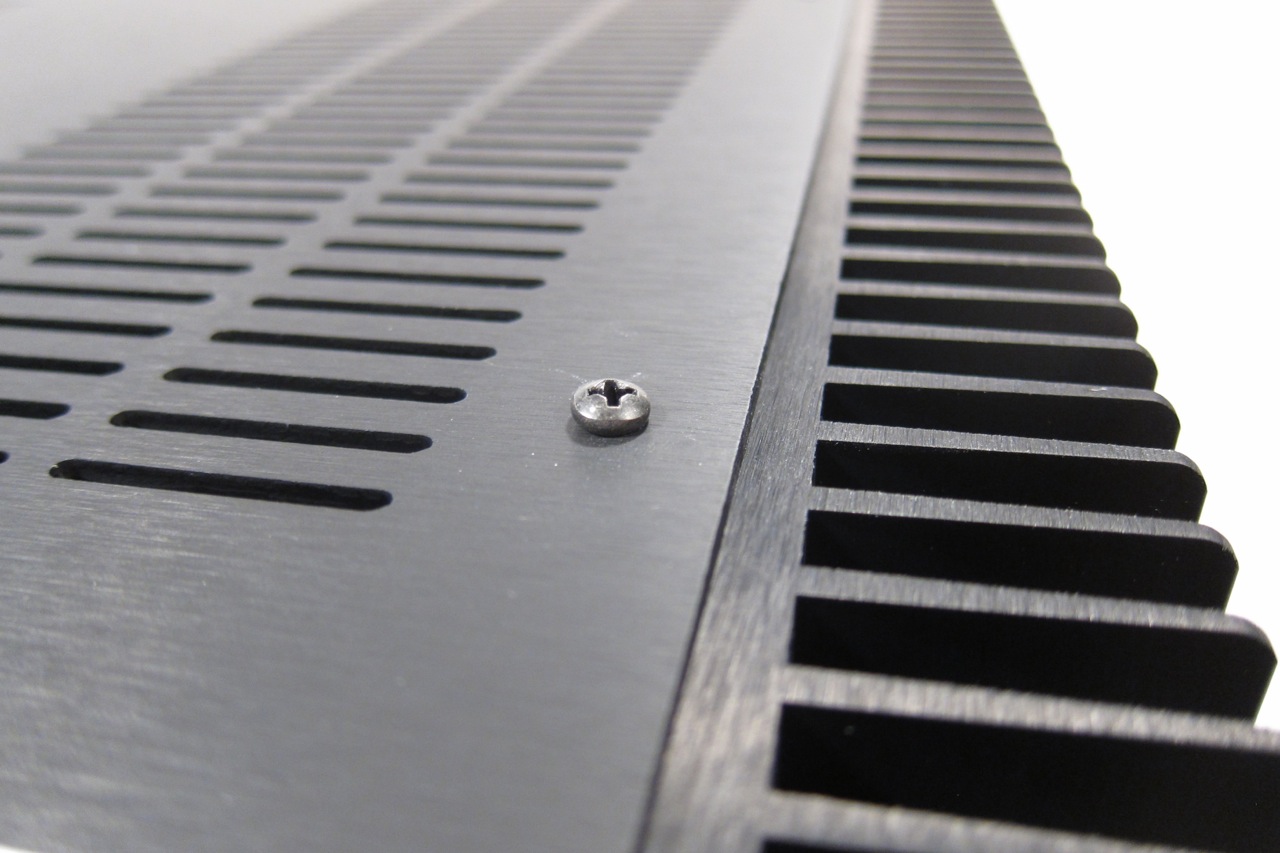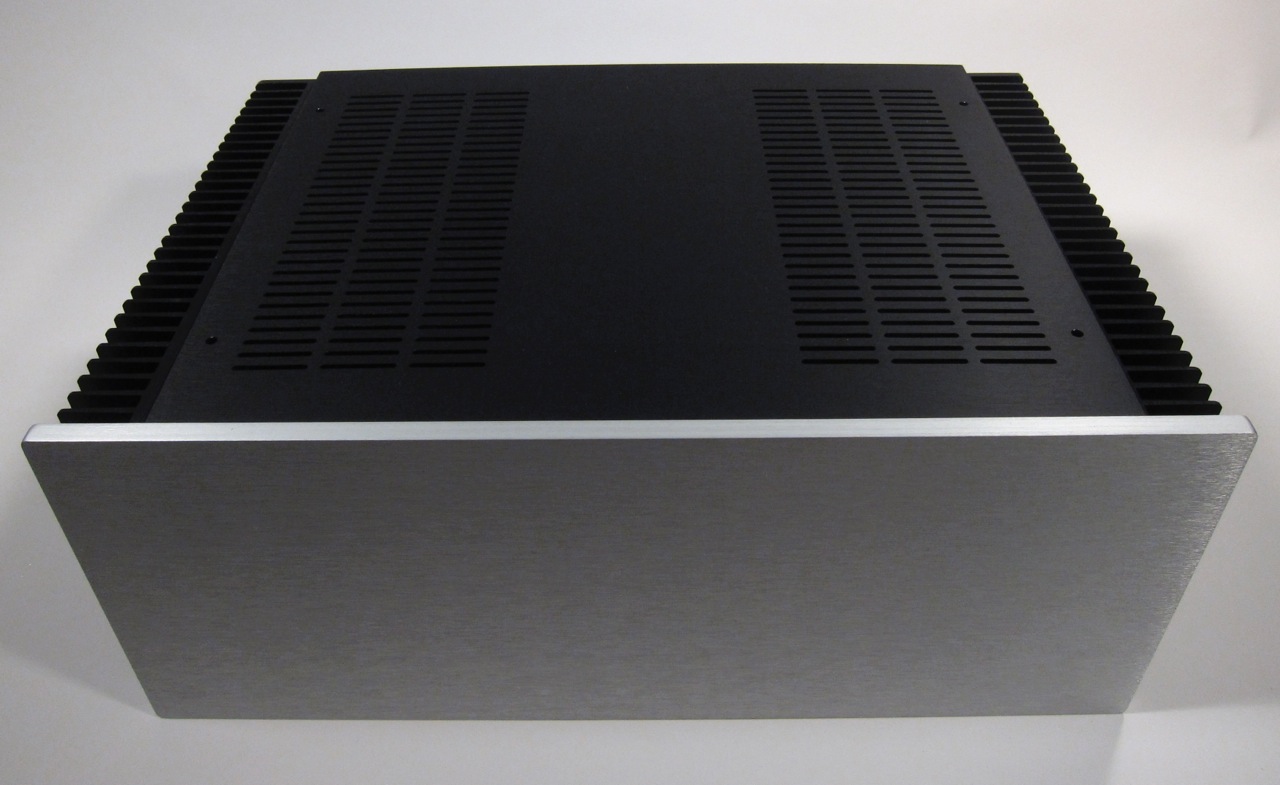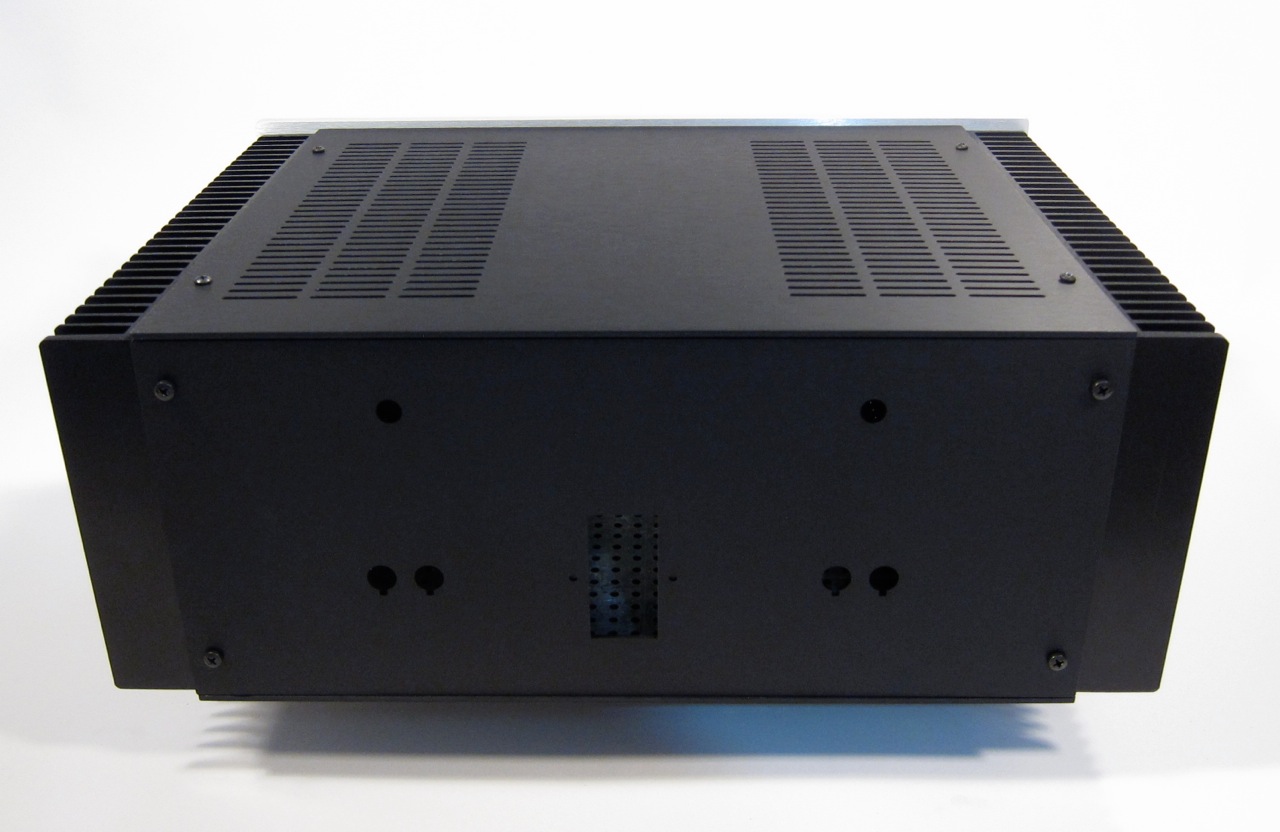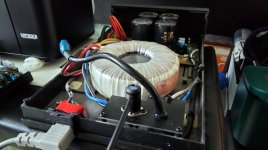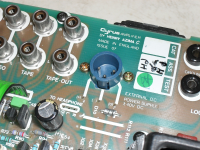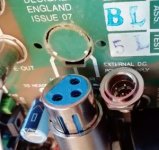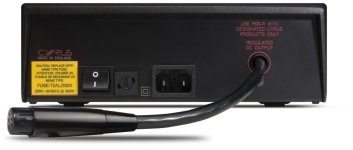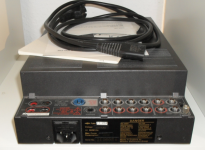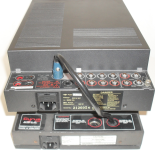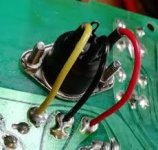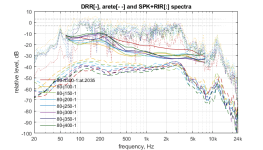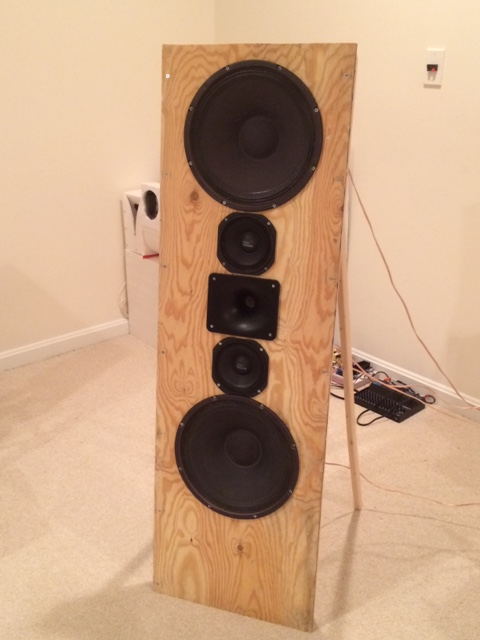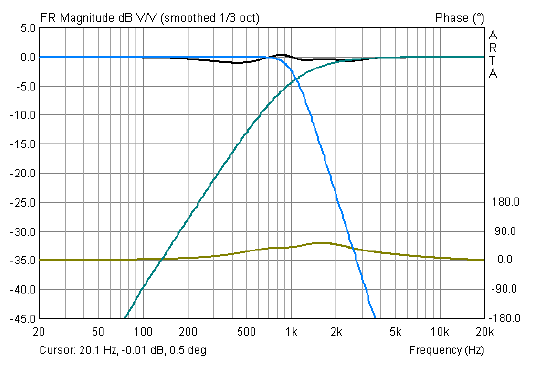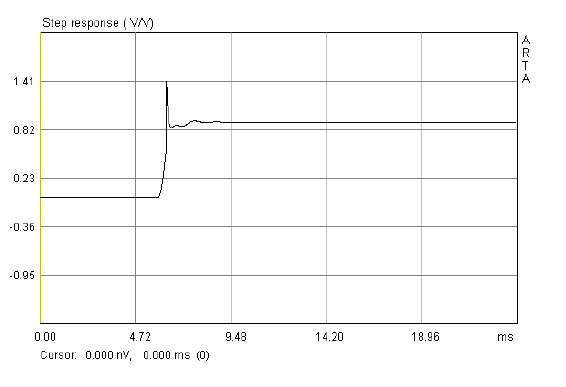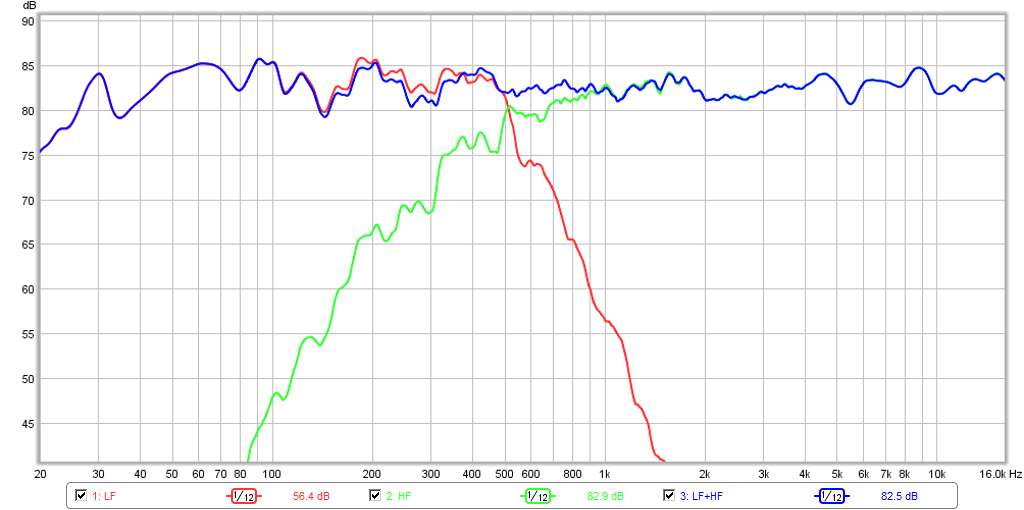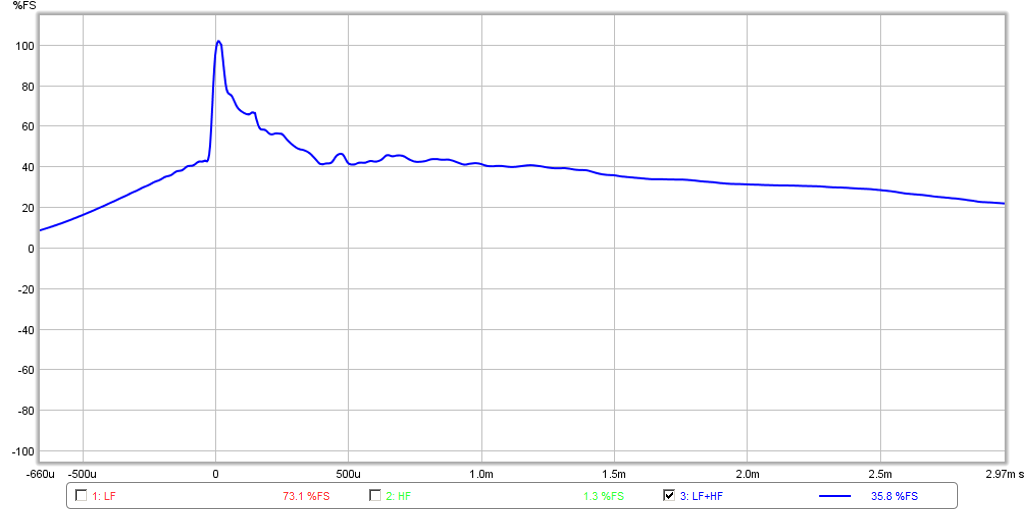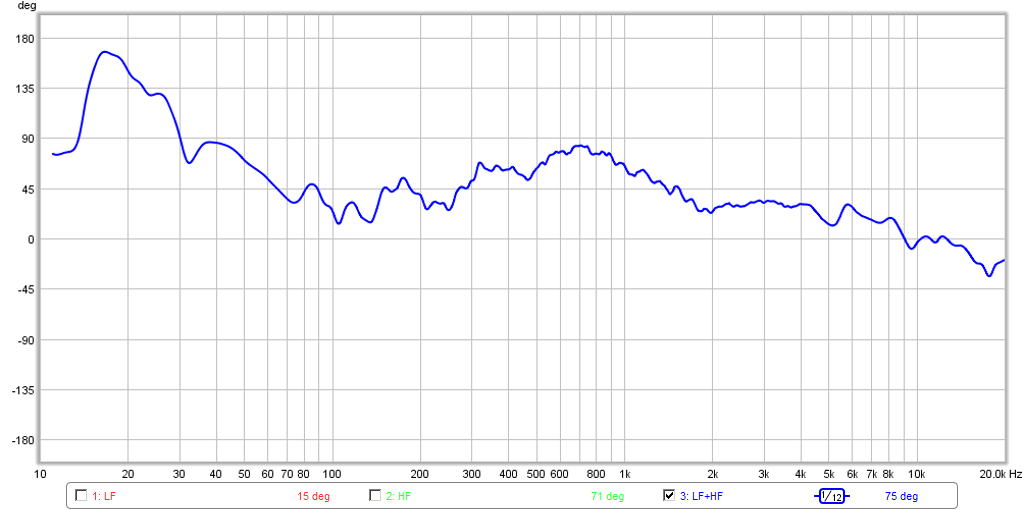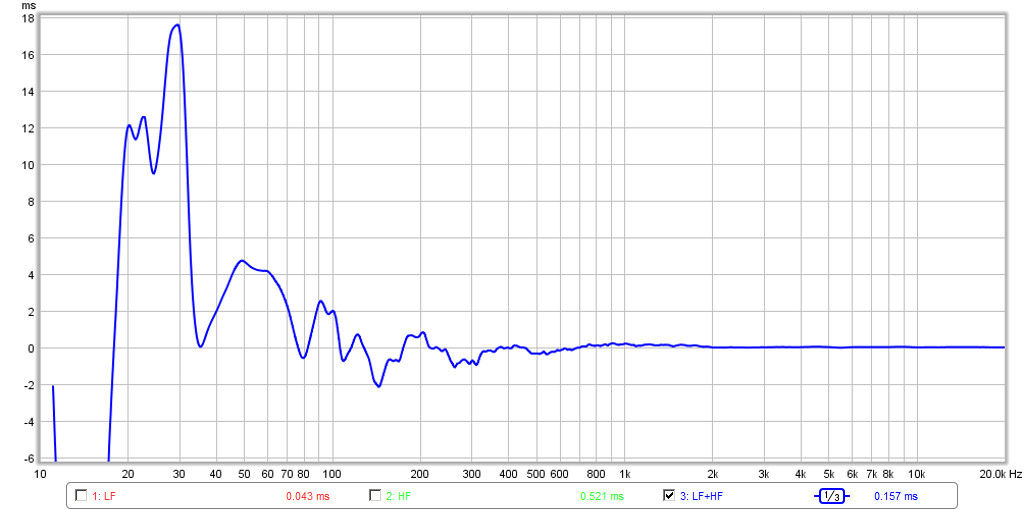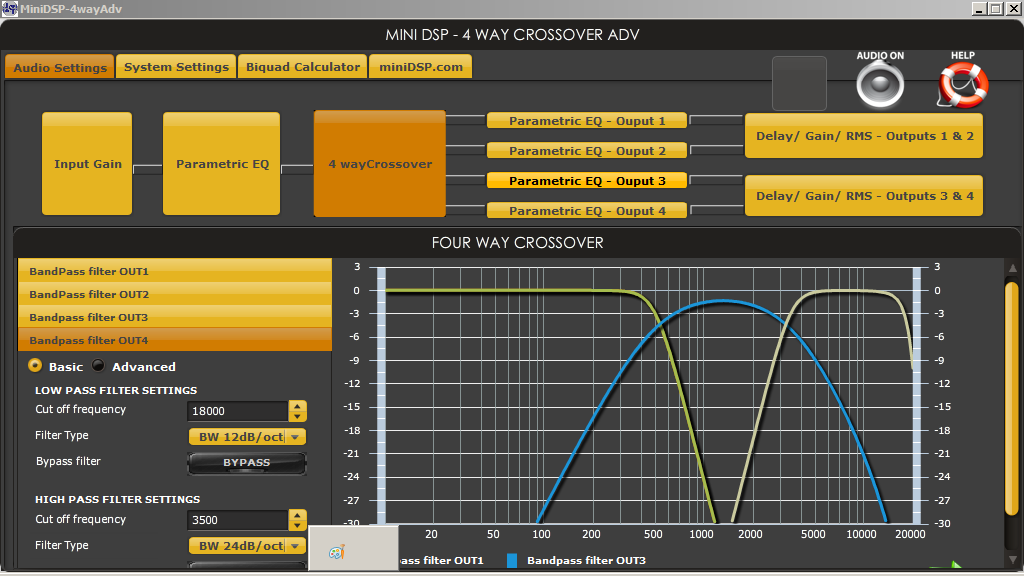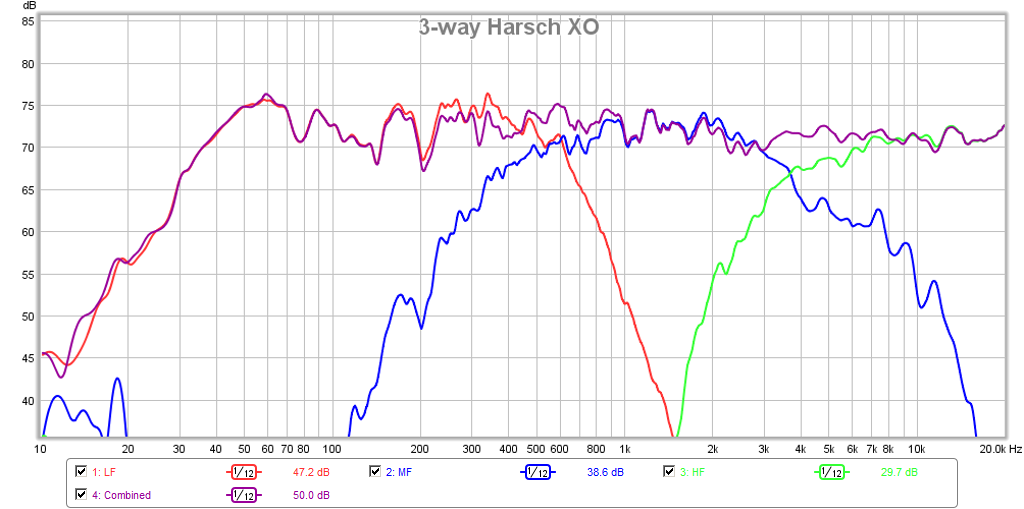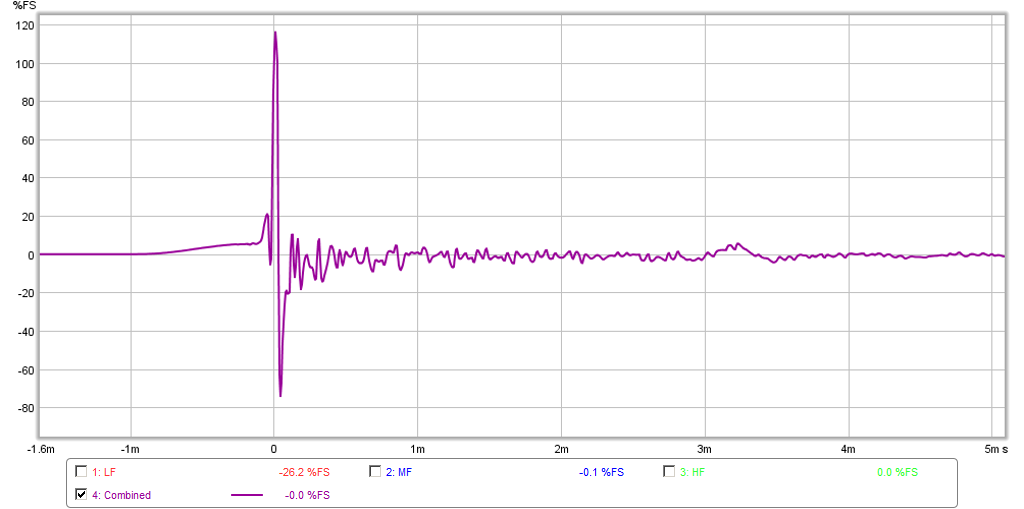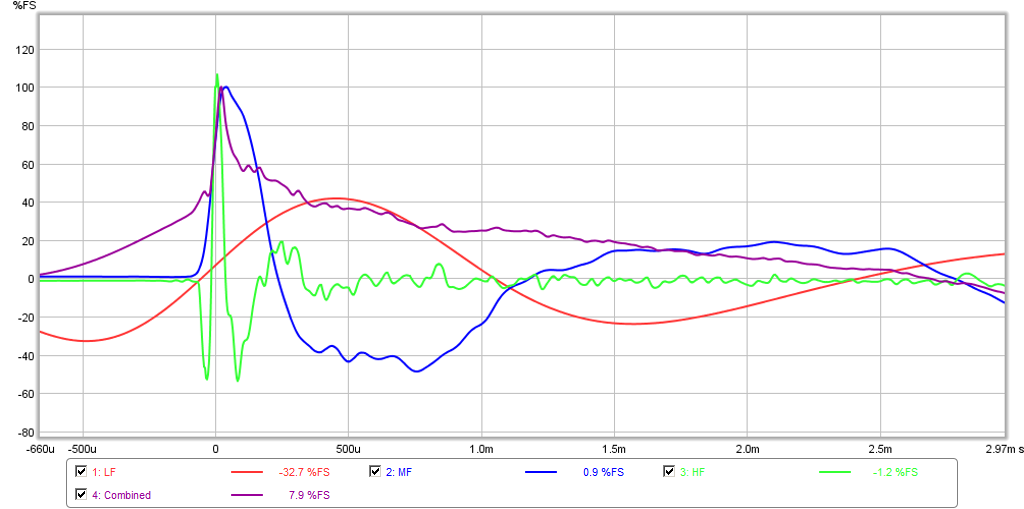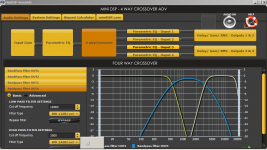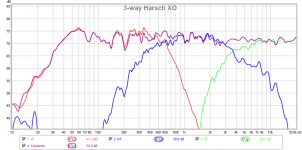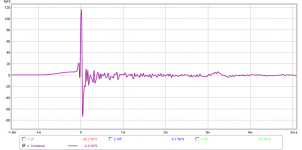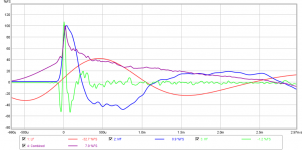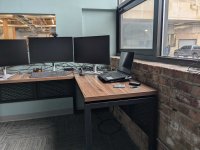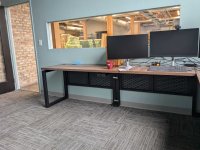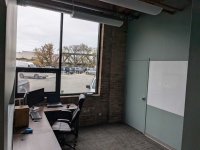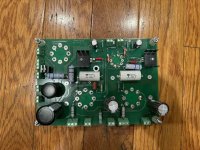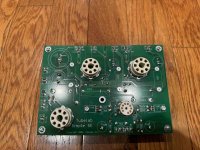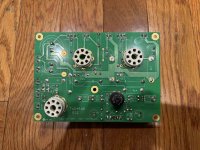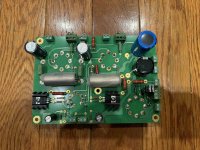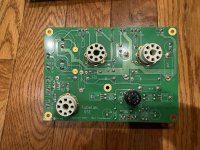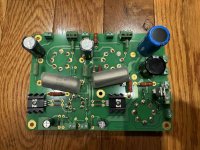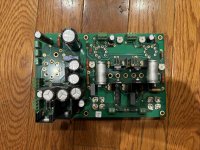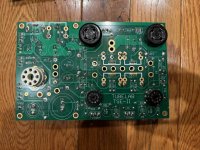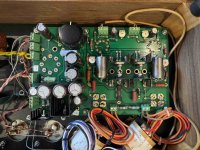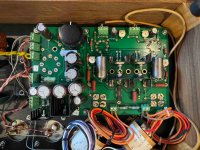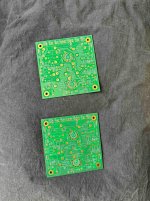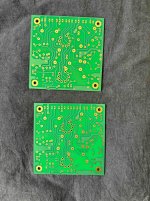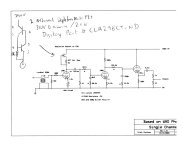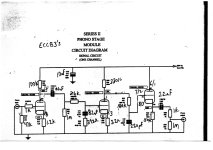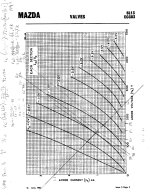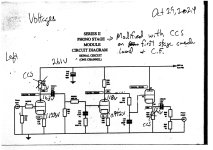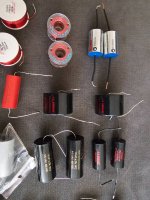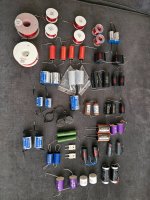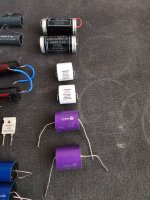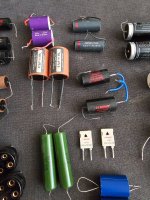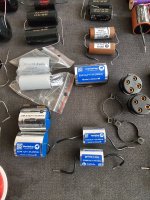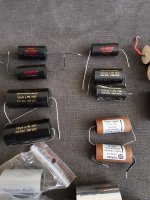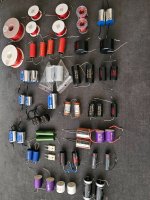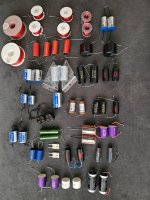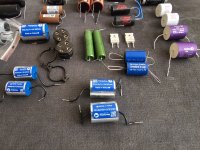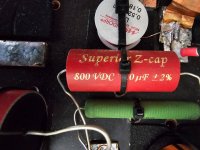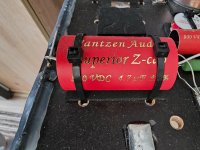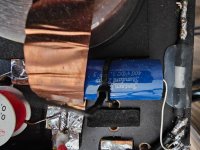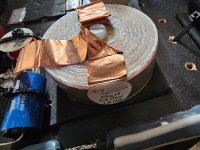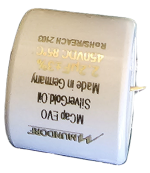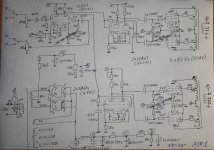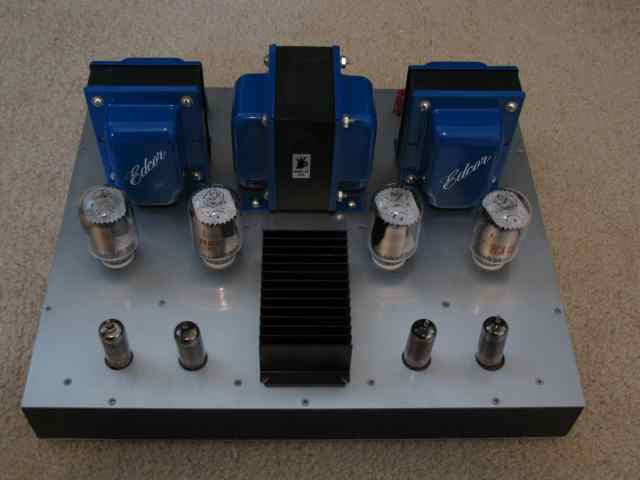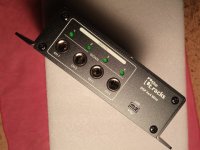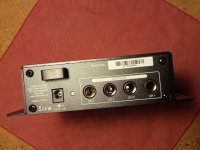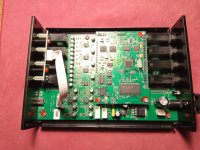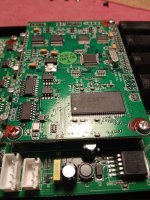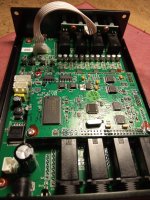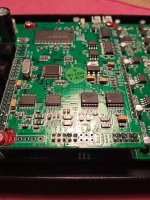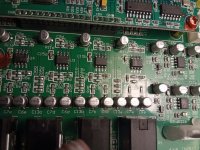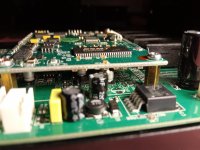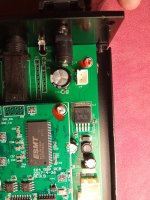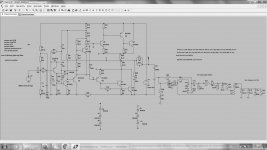ESL Newbie questions...
- By jojonline
- Planars & Exotics
- 44 Replies
Hi all,
me and a friend are going to build ESL after building "normal" speakers for centuries.
So far we've read a lot about ESL's. The more we read, the more questions we have... I gues you know what I mean 🙂
Anyway, we are going to build hybrid speakers, me i'm going to use a Ripol (since i am a big Open-Baffle fan) for the bass section, my buddy will use a closed box.
We decided to cross them around 200-250 Hz. If passive or active is not sure at the moment...
The panel size will be 285x900mm divided in 20-12-6-6-6-12-20 segments.
And here the questions start...
If we use aluminium profiles for the frame and also for the cross-braces and use duoble-sided tape 0,2mm for bonding the membrane to the frame, will there be enough insulation against the membrane and also the wires?
In the picture you can see that we tried two different sizes of ds-tape, one is 0,2 mm, the other one is 1.5mm thick. This was to check wether the braces will stick strong enough to the frame, unfortunately they do not. Next step will be to check wether glueing the braces with Sikaflex221 to the frame.
If we use rivets to fix the braces it is ok, but we lose the insulating effect of the frame material, this is a sandwich of aluminium and some plastic (here in Germany it is called Alucobond).
Don't mind the stator wires on the pictures, this was only to check how fast the glue is drying.
Another question concerns the distance from stator to membrane. Since the material we want to use for the frame was only available in 4mm and we want to keep things simple, the distance/gap between stator wires (outside of the insulation) is only 2mm instead of 3mm like described on the website of Steen Frank Jensen.
To be honest, to keep things simple we are going to copy his model since it is not that big.
We also like all the other stuff we have seen here in this forum but most these ESL's are too big.
Anyway we include some ideas from here in our building process...
So we are looking forward to your answers.
We are sorry for the chaos with the pictures... We couldn't find a way to delete the needless ones...
Best regards, Juergen and Dani
from Germany

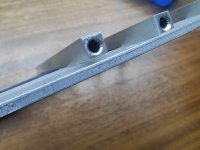
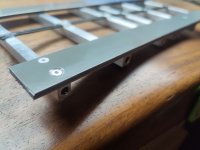


me and a friend are going to build ESL after building "normal" speakers for centuries.
So far we've read a lot about ESL's. The more we read, the more questions we have... I gues you know what I mean 🙂
Anyway, we are going to build hybrid speakers, me i'm going to use a Ripol (since i am a big Open-Baffle fan) for the bass section, my buddy will use a closed box.
We decided to cross them around 200-250 Hz. If passive or active is not sure at the moment...
The panel size will be 285x900mm divided in 20-12-6-6-6-12-20 segments.
And here the questions start...
If we use aluminium profiles for the frame and also for the cross-braces and use duoble-sided tape 0,2mm for bonding the membrane to the frame, will there be enough insulation against the membrane and also the wires?
In the picture you can see that we tried two different sizes of ds-tape, one is 0,2 mm, the other one is 1.5mm thick. This was to check wether the braces will stick strong enough to the frame, unfortunately they do not. Next step will be to check wether glueing the braces with Sikaflex221 to the frame.
If we use rivets to fix the braces it is ok, but we lose the insulating effect of the frame material, this is a sandwich of aluminium and some plastic (here in Germany it is called Alucobond).
Don't mind the stator wires on the pictures, this was only to check how fast the glue is drying.
Another question concerns the distance from stator to membrane. Since the material we want to use for the frame was only available in 4mm and we want to keep things simple, the distance/gap between stator wires (outside of the insulation) is only 2mm instead of 3mm like described on the website of Steen Frank Jensen.
To be honest, to keep things simple we are going to copy his model since it is not that big.
We also like all the other stuff we have seen here in this forum but most these ESL's are too big.
Anyway we include some ideas from here in our building process...
So we are looking forward to your answers.
We are sorry for the chaos with the pictures... We couldn't find a way to delete the needless ones...
Best regards, Juergen and Dani
from Germany



